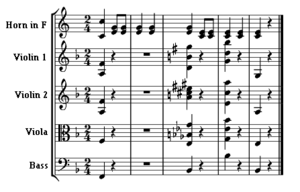Polytonality facts for kids
Polytonality is when a piece of music uses several different keys at the same time. Music that does this is called polytonal.
When a piece of music uses exactly two keys at the same time, it's called bitonality. Music like this is called bitonal.
Contents
What is Polytonality?
Imagine a song where one part sounds like it's in the key of C major, while another part is playing in the key of F sharp major. That's polytonality! It's like listening to two different songs at once, but they are meant to go together.
How is it Different from Regular Music?
Most music you hear, especially older or traditional songs, is written in just one key. For example, a song might be "in C major." This means it mainly uses the notes from the C major scale.
When music uses only one key, it often sounds familiar and easy to follow. Polytonality makes music sound more complex or even a bit strange, which can be interesting!
When Did Composers Start Using It?
Composers started experimenting with polytonality more often in the 20th century. They wanted to create new and exciting sounds that were different from traditional music.
One famous example is from Igor Stravinsky's ballet called Petrushka. In one part, a clarinet plays a tune in the key of C major. At the same time, another clarinet plays a different version of the same tune, but in the key of F sharp major! This creates a unique and sometimes funny sound.
Who Used Polytonality?
Many composers have used polytonality or bitonality in their music. Some well-known names include:
They used these techniques to add new feelings and textures to their music, making it sound more modern and surprising.
See also
 In Spanish: Politonalidad para niños
In Spanish: Politonalidad para niños


